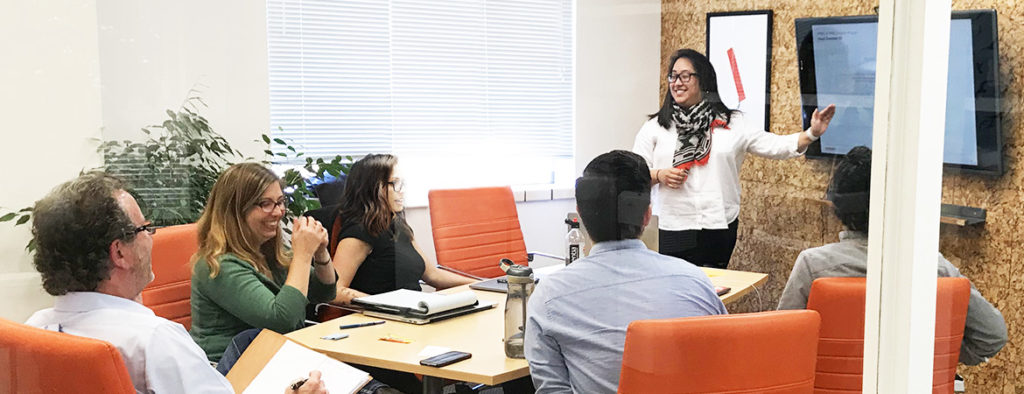As creatives, our job is to listen to our clients’ needs and obstacles, come up with effective solutions, and create work we’re proud of. But the part we don’t always think about is the fact that how we present it is just as important as the work itself.
Our team felt very privileged to participate in a workshop with the amazing Speaking of Creative coach Darrell Hayden, who gave us valuable insight into what we’re doing right and what we could do better. We all have different styles—some of us like to prep every word, some of us jot down a few talking points, and some of us like to wing it. Darrell had us each prepare some creative, pretend that he and the rest of the gang were clients, stand up, and present.
At first, we were confused: Why ask us to stand up? Nowadays most of our presentations are over the phone to spare us from travel time and parking tickets. But it ended up offering additional benefits to our speaking. Not only did it give us a boost in energy, but it also gave us the opportunity to practice making eye contact and getting a better read on the audience—a skill that’s becoming lost in the age of speaker-phone presentations.
Even though most of us have many years of presenting under our belts, we made quite a few discoveries that day. It turns out we all had idiosyncrasies that we didn’t even know about. So, we gave ourselves nicknames.
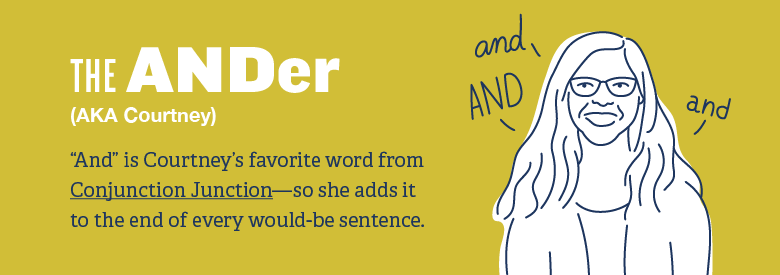
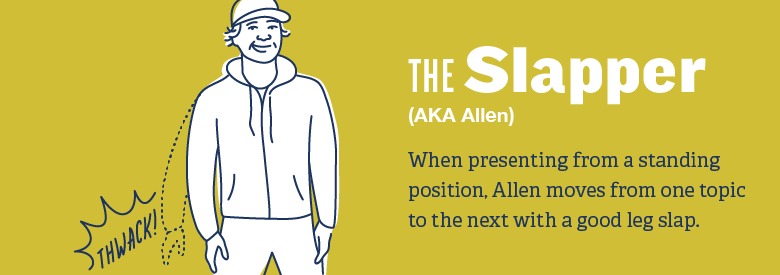

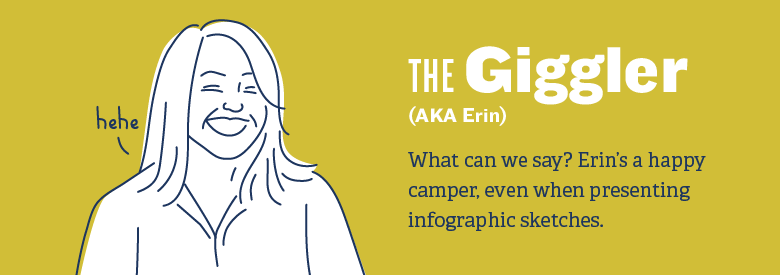
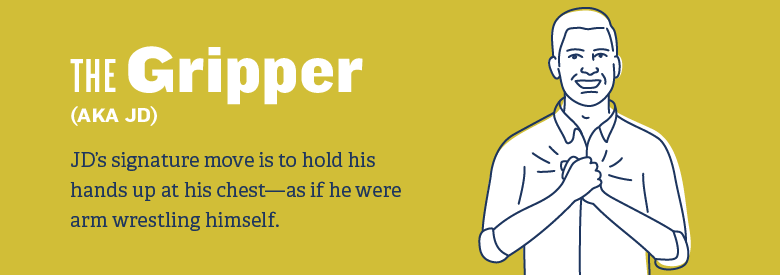
Darrell gave each of us instant feedback, often stopping us mid-sentence, so that we could try alternative techniques and see the difference. Afterward, over a few celebratory high-fives and drinks, the team got together and talked about some of his advice and some of our own best practices. Here’s our short list.
4 ways to kick @ss, creatively speaking
#1 Prep for a productive conversation.
Yes, it’s a presentation. But to really make it worth everyone’s time, it needs to be a two-way conversation—so you both come away with what you need. If it’s a R1, re-read the creative brief and kick-off notes and make yourself some notes to keep handy to remind yourself of the creative strategy. Or, if it’s a later round, address their feedback and your solutions directly. Were there any elements that they wanted you to explore? Did you offer a different option that might be a departure from what they were expecting (but might also deliver better results)? Put your presentation in the context of what’s most important to them and to how your work solves their creative challenge.
Also, make sure they’re fully aware of any particulars they should be reviewing when they take the presentation back to their team. And if you have a strong opinion on elements of the campaign—the messaging hierarchy or a UX decision, for example—tell them and tell them why. Let them ask you questions about the process. Not only will this help them go back to their team and make good decisions, but it also positions you as a creative partner who’s there to help make their lives easier.
#2 Think about how much time you have and use it all.
It’s tempting to try to jam through your presentation quickly and give everyone their time back. Resist that temptation. They’ve allocated that time to hear how you’ve solved their creative problems, so use it to the fullest.
Here are a few benefits of taking your time:
- It adds fun to your clients’ day. For many marketers, going through creative stuff is possibly the best part of their day. You may be giving them a much-needed break from budget meetings and legal reviews. Don’t rush them through it.
- It helps them focus. Remember: Your clients have probably come directly to this meeting from another meeting, so their minds are still swimming with thoughts of the previous discussion and their endless to-do list. They may not have had time to review the presentation or the brief before your meeting. Leave yourself time to set it up and then go slow. Pause. Give them time to let it sink in.
- It helps you think on your feet. If you feel yourself grasping for words during your presentation, take a beat. Let your brain catch up to your mouth. It’s not dead air—pausing makes people stop to listen to you, and it makes you sound more polished and professional.
- It helps you avoid the dreaded in-fill words. Um. Er. Uhhhhhh. You know. You may feel like they’re helping to fill the void, but they’re just making you look more nervous and less prepared.
- It helps you better connect with your audience. If they’re lost and you’re going too fast, they may be too polite to interrupt you at warp speed. Conversely, if you pause and they want to skip ahead, that’s fine too.
#3 Don’t read it. Sell it.
There’s nothing worse than having someone read slides to you in a monotone. If you don’t sound interested in it, they’re not going to be either. We’re not just writers and designers—we’re professional storytellers and problem solvers. Explain some of the challenges and get excited about the solutions you’re going to show them.
It’s okay to geek out a little bit on how you got really into figuring out your solutions. We’re creatives! We love our jobs! Solving their problems is what gets us out of bed in the morning. And that’s why they want to work with us.
If you’re presenting in person, be sure to make eye contact with everyone in the room, not just the person sitting directly across from you. If standing, position yourself so you have a good line of sight with all attendees. It’s much easier for clients to zone out if they feel like you’re not connecting with them, and it often leaves them feeling excluded from the conversation.
Don’t forget, even if YOU were the only creative working on a project, when you present it, use WE. “We thought leading with urgency and the limited-time aspect of the offer would be a good approach for this reminder email.” We’re presenting a joint creative deliverable to them—so WE are in this together.
#4 Stay upbeat, even if they hate it.
No matter how good it is, sometimes the creative you’re presenting just isn’t what the clients are looking for. Let them jump in, if they wish, to tell you what’s wrong. Listen to them, acknowledge that you understand (or ask questions), and let them know that they’ve been heard and that you can fix it.
If there are still parts in the presentation that are applicable to the request, point those out. Even if you’re going to revise it and send out another ASAP presentation (the dreaded “R1.5”), tell them about what you have that might meet their needs and ask if they felt these might still work. Getting that real-time feedback will help ensure your next rev is right on.
And remember: never get defensive or shut down during a presentation. Just bob and weave. A short apology is fine (if the disconnect was your mistake), but don’t dwell on it. Just focus on what you’re going to do next to solve the problem. (You can cry or have a shot of tequila after the meeting.)
While we’re not necessarily equipped to start our own expert-level series of speaking workshops, we all felt pretty good about this list. Here’s hoping they inspire your next presentation, helping you show your work in the best possible light.
